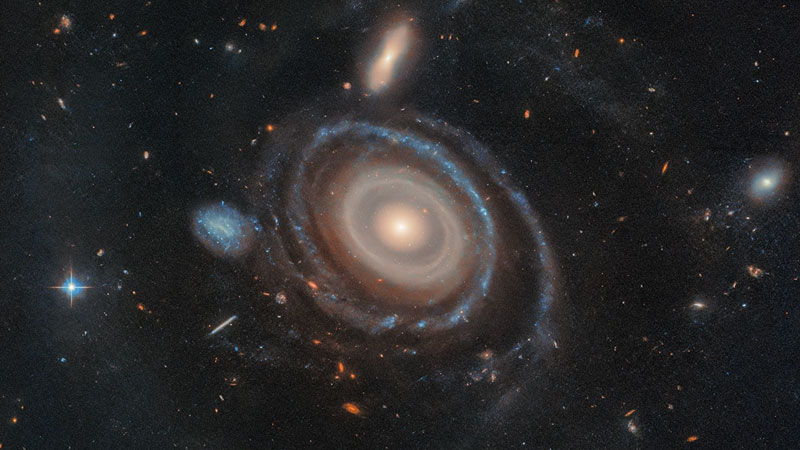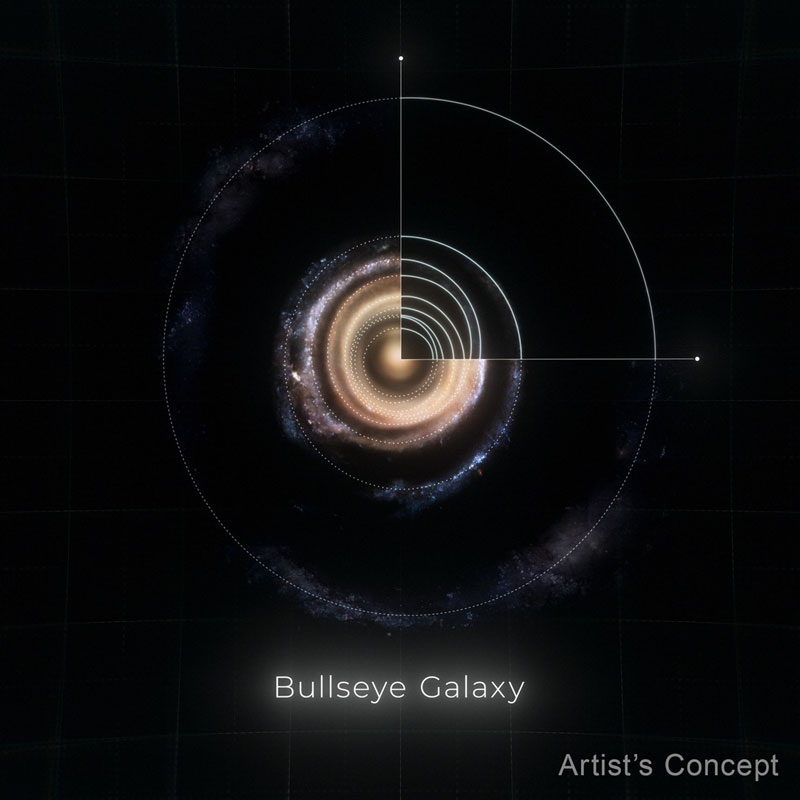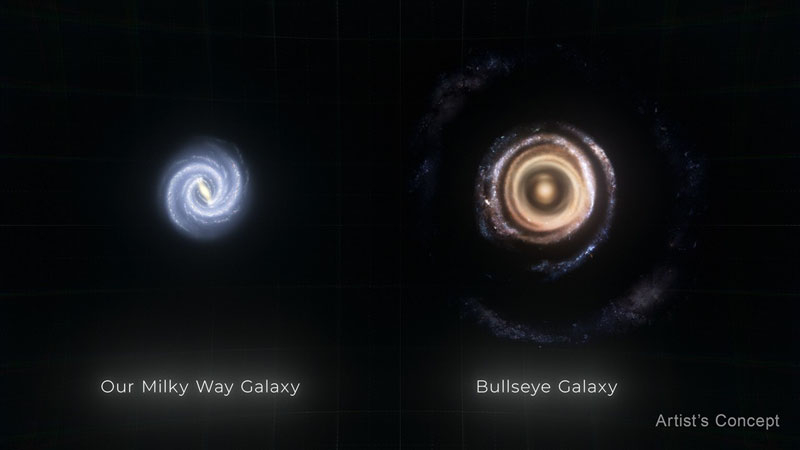Astronomers discovered the LEDA 1313424 galaxy, which is strikingly different from everything that was previously observed. From its center, like circles on the water, nine sleeves are diverge, while most of the other galaxies have only two or three. Thanks to its unusual appearance, the galaxy received the nickname Bullseye (English – “Apple”, like the center of the target). This name is especially symbolic, since another galaxy crashed into its center, like an arrow in a target.

Image source: NASA
The Galaxy LEDA 1313424, or “Apple”, was discovered by accident. The attention of the astronomer attracted an unusual object in the workshops, which prompted to conduct a more detailed study. In addition to the Hubble space telescope, the observation was used in the observation ground observatory of Kek (Hawaii). Studies using ground tools made it possible to detect the signs of the tenth ring, which probably almost dispersed by the time the picture was created.
Each ring in the Galaxy LEDA 1313424 is an area with an increased concentration of stars, gas and dust. According to modeling, about 50 million years ago, a dwarf blue galaxy passed through the Yablochka center, which can now be seen to the left of its center. These two galaxies still connect the barely distinguishable train of gas and dust, which will completely disappear over time.

Today, astronomers have many pictures of colliding galaxies. However, the opening of the LEDA 1313424 was the first case in the history of observations, when one galaxy went exactly through the center of the other – it fell directly into the Yablochko! It is noteworthy that all previously created models of the evolution of colliding galaxies predicted just such a distribution of star substance, which is now observed in LEDA 1313424.

The LEDA 1313424 Galaxy is about 2.5 times more than the Milky Way: its diameter reaches 250 thousand light years. Galaxy-target and galaxy-“arrow” shares a distance of about 130 thousand light years. A high concentration of gas and dust in the rings accelerated the process of star formation, further emphasizing the unique structure of the object. Such clashes in the universe occur regularly, and probably there are much more such galaxies – they have to find them than astronomers and will be engaged in in the future.